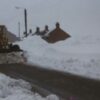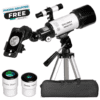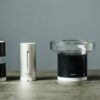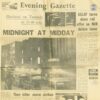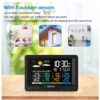How I Started Durham Weather
Weather and weather forecasting is now big business.
Since 1976, i’ve continued to measure local weather, although several house moves around the North East (Ferryhill, Kirk Merrington, Langley Park) and a trip to college in Newcastle had made the weather measurements a little sporadic in the 90’s. However, they are more stable as I’m a stay-at-home retired creature now. I also have a partner who doesn’t take the mickey much, so I don’t feel so embarrassed.
In the dim distant 1990s I befriended Helen Goldie and later Professor Tim Burt who ran the official Durham University Weather Station at Potters Bank in Durham City. (this is the official Met Office Durham Weather reporting site). I began swapping thoughts and weather measurements with them.
In the late 1990s the first real automated weather stations came onto the market. I saved up my pocket money and bought one for myself. It was a Davis Weather Monitor II.
I still think of the Davis Weather Monitor as the best weather station on the market at the time.
It cost me an arm and a leg (and possibly a marriage) back then, but it helped me avoid disappearing into the garden at ungodly hours of the night to read the data myself. That also halved the heating bill!
Measuring the weather can now be done a lot more accurately than with the old home made screen I used. (It was a halved tin of baked beans opened out and nailed to a plank). Sometimes it was a thermometer screwed to the doorframe. (My dad wasn’t impressed with me for ruining all his door frames!)
It also allowed me to automatically upload my weather observations to my flashy new weather website on the Interweb. This got me on the World map of Weather!
These first automated meteorological readings were made in Ferryhill, 6 miles to the South of Durham and those old weather records can be seen here. If you’re not that sad, don’t worry about it.
Now, in Durham, the shiny NetAtmo gizmos log everything automatically and all the averages and the figures are calculated for me, like magic itself. It’s a neat little system and not too expensive to own (under 150 quid). The sensors are battery operated and the AAA batteries last for ages.
I did have a little battery problem when I first got the kit, but NetAtmo sorted it out by sending me a replacement sensor in a couple of weeks. You can get one in the Durham Weather Shop.
Latest Editorial Posts
- How a Plastic Bin Fooled My Weather Station
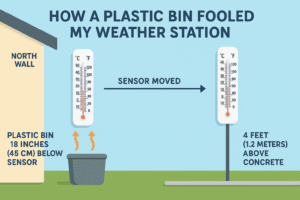 Sometimes, in the world of amateur meteorology, it’s not the technology that trips you up. It’s the humble bin. Yes, a bog-standard plastic bin. And not doing anything remotely interesting,
Sometimes, in the world of amateur meteorology, it’s not the technology that trips you up. It’s the humble bin. Yes, a bog-standard plastic bin. And not doing anything remotely interesting, - Cathedrals, collieries, castles and coastlines
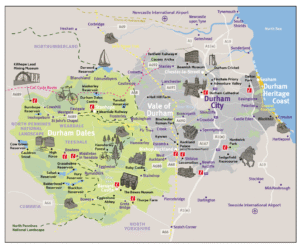 County Durham—my own stomping ground. It’s a place that doesn’t get nearly enough credit for its beauty, charm, and personality. Tucked neatly between Northumberland to the north and Yorkshire to
County Durham—my own stomping ground. It’s a place that doesn’t get nearly enough credit for its beauty, charm, and personality. Tucked neatly between Northumberland to the north and Yorkshire to - Exploring the Serene Beauty of England’s River Wear
 Exploring the Serene Beauty of England’s River Wear Nestled within the picturesque landscapes of Northeast England, between the Tyne to the North and the Tees to the South, the River
Exploring the Serene Beauty of England’s River Wear Nestled within the picturesque landscapes of Northeast England, between the Tyne to the North and the Tees to the South, the River - About our Visitors to Durham Weather
 What do people search for at Durham Weather? Here at Durham Weather, we are always interested in what others are searching for when they find us. The weather is of
What do people search for at Durham Weather? Here at Durham Weather, we are always interested in what others are searching for when they find us. The weather is of - What are the most important things to consider when buying a weather station for the home?
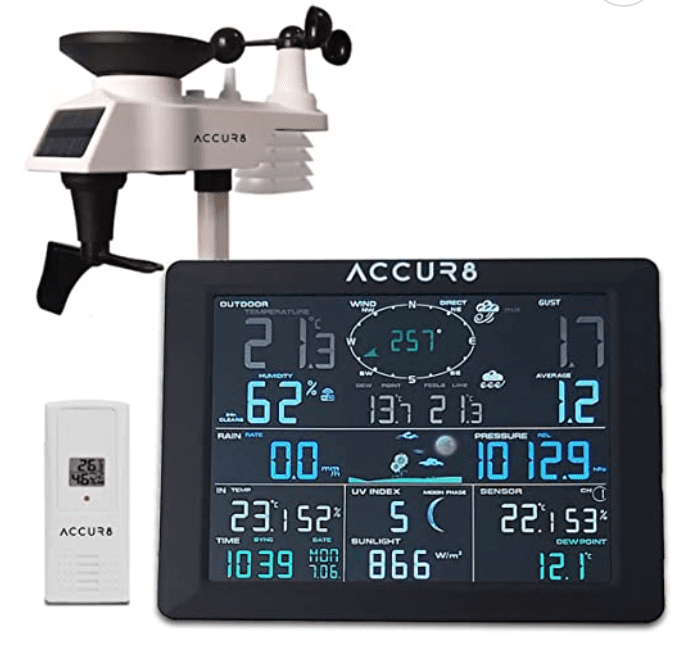 How to choose a Weather Station When buying a weather station for the home, there are several important things to consider: Accuracy: The most important feature of any weather station
How to choose a Weather Station When buying a weather station for the home, there are several important things to consider: Accuracy: The most important feature of any weather station - How I Started Durham Weather
 Weather and weather forecasting is now big business. Since 1976, i’ve continued to measure local weather, although several house moves around the North East (Ferryhill, Kirk Merrington, Langley Park) and
Weather and weather forecasting is now big business. Since 1976, i’ve continued to measure local weather, although several house moves around the North East (Ferryhill, Kirk Merrington, Langley Park) and

Sponsor us and have your logo displayed here, on every post or page. We'll link to your website too.




